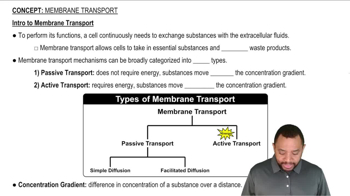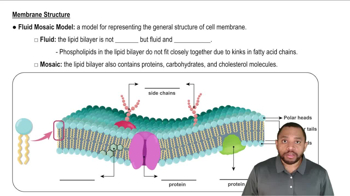Identify the type of transport (passive diffusion, facilitated transport, or active transport) that will occur for the following molecules:
(b) glucose, no energy required
 Verified step by step guidance
Verified step by step guidance Verified video answer for a similar problem:
Verified video answer for a similar problem:



 1:21m
1:21mMaster Membrane Transport Concept 1 with a bite sized video explanation from Jules
Start learning